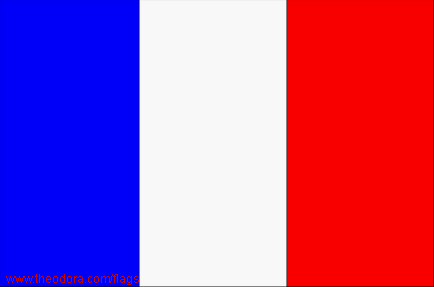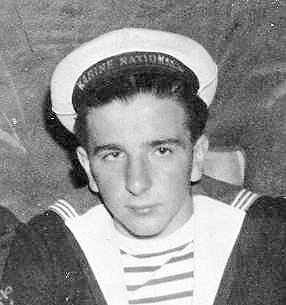NavSource Online: Mine Warfare Vessel Photo Archive
MSC-115
ex-AMS-115

AMS-114 was built for France.

Specifications:
Après mes congés de fin de campagne, suite à mes deux années passées sur le Golo en Indochine, j'étais disponible au dépôt de Brest quand début mars 1954, nous fûmes regroupés en divers équipages de dragueurs que nous devions aller armer aux USA.
Le 16 mars, nous avons décollé d'Orly dans un Constellation d'Air France pour New-York. Il devait y avoir trois ou quatre équipages. De là, nous sommes repartis pour Seattle dans l'état de Washington, sur le Pacifique à la frontière du Canada, ou nous sommes arrivés le 18 mars, il ne faisait pas chaud. Nous fûmes très bien accueillis et logés dans des baraquements où nous étions avec des Anglais, des Italiens, des Belges, des Hollandais, plus une ou deux autres nationalités, tous venus prendre en armement des dragueurs de taille et de tonnage divers. Les AM ou dragueurs océaniques de 750 tonnes et les AMS devenus MSC de 405 tonnes.
Le lendemain, une délégation de six ou sept hommes dont je faisais partie, fut mise en route vers le fameux port de Tacoma où était construit notre bateau. On nous le présenta, tout neuf, à quai, venant d'être lancé. Notre travail a consisté à aller chercher et à embarquer tout le matériel mobile du bord. Les deux boscos que nous étions sommes occupés du couchage surtout, je me rappelle d'une corvée rien que pour les matelas et les couvertures. Puis les aussières, les défenses et tout ce matériel revenant à la charge du Bosco. Il en a été de même pour les autres spécialités. Environ une semaine plus tard, le reste de l'équipage nous a rejoint et il fut procédé à la remise officielle et à la cérémonie des couleurs. Là nous avons visité un des sites de construction de ces dragueurs tout en bois. Nous étions embarqués sur la JACINTHE et dans les vivres que nous recevions figurait en jolis tonnelets en bois vernis de 25 litres du vin de Californie titrant 14 degrés, du TAVOLA dont j'avais fait la découverte à San Diégo en octobre 1951. Mais ceci est une autre histoire...
Nous avons ensuite commencé les essais à la mer. Tout se passe bien, et nous voilà partis pour Long Beach, un des ports de Los Angelès, en Californie. Et là, nous sommes à l'école de dragage avec la première semaine en théorie poussée sur la composition des diverses mines et les moyens dont nous disposions à bord pour les neutraliser.
Puis ce fût la pratique à la mer avec toujours divers dragueurs de nationalités différentes. Tout s'est très bien passé et nous nous apprêtions à rentrer en France quand un grave incident s'est produit sur un AMS qui a entraîné sa perte ; c'était le bateau école de l'US Navy qui a coulé suite à la désintégration du volant d'inertie d'un groupe électrogène de drague Après enquête, il fût démontré que s'il avait explosé, c'était parce qu'il était en bronze. La décision américaine fût vite prise de changer tous les volants d'inertie en bronze par des volants en acier inoxydable sur tous les dragueurs qui en étaient équipés. Par chance ceux de la JACINTHE étaient bons ce qui nous a évité de retourner au chantier pour plusieurs mois. Nous sommes donc restés avec six ou sept autres en " vacances " sur les côtes de Californie entre Los Angelès et San Diégo. Nous fûmes même invités par Wriggles, les chewing gum, à passer un week-end sur son île de Santa Catalina.
Le 30 octobre enfin, nous partîmes en convoi de San Diégo, direction le canal de Panama. Il devait y avoir une vingtaine de bateaux escortés par le ravitailleur MOLALA. Nous y sommes parvenus au bout d'une quinzaine de jours et nous avons franchi ces immenses écluses amarrés deux par deux pour faciliter les manœuvres. Ensuite, direction Fort-de-France, ou après une bonne semaine de mer, nous avons retrouvé la France, des vivres français, sans oublier le tabac qui m'avait personnellement beaucoup manqué.
Puis après escale à Cayenne, Dakar et Casablanca, nous sommes arrivés à Brest vers le 20 décembre 1954. Au printemps 1955, du 30 mars au 9 juin, nous avons participé au dragage d'un champ de mines en mer du Nord entre la Hollande et le Danemark et nous avons nettoyé un chenal de 120 miles de long sur un mile de large, pour la pose d'un câble sous-marin entre ces deux pays. J'en ai débarqué début 1956 affecté en Baie-Ponty à Bizerte. Par la suite, la Jacinthe fut transformé en bateau d'assistance aux plongeurs démineurs. J'étais Q/M1 Manœuvre, si je m'en souviens cela faisait : Quatermaster
first class Bossman.
After my vacation of end of campaign, following my two years spent on Golo to Indo-China, I was available to the deposit of Brest when at the beginning of March 1954, we were gathered as various crews of dredgers which we must go to arm in the USA.
March 16, we took off of Orly in a Constellation of Air France for New York. There was to be three or four crews. From there, we set out again for Seattle in the state of Washington, on the Pacific at the border of Canada, or we arrived on March 18, it did not make hot. We were very well accomodated and placed in hutments where we were with English, Italians, Belgians, of the Dutchmen, plus one or two other nationalities, all come to take in armament dredgers of various size and tonnage. The AM or oceanic dredgers of 750 tons and the AMS become MSC of 405 tons.
The following day, a delegation of six or seven men of which I formed part, was started towards the famous wearing of Tacoma where our boat was built. It was presented to us, very nine, with quay, has been just launched. Our work consisted in going to seek and embarking all the mobile material of the edge. Both boscos that we were naps occupied of the bed especially, I remember of a drudgery only for the mattresses and the covers. Then hawsers, defenses and all this material returning to the load of Bosco. It was in the same way for the other specialities. Approximately a week later, the remainder of the crew joined us and it was proceeded to the official handing-over and the ceremony of the colors. There we visited one of the sites of construction of these dredgers very out of wooden. We were embarked on the HYACINTH and in the food which we receive appeared in pretty varnished small casks out of wooden of 25 liters of the wine of California containing 14 degrees, of the TAVOLA of which I had made the discovery with San Diégo in October 1951. But this is another history...
We then began the tests with the sea. All occurs well, and us here are parties for Beach Length, one of the ports of Los Angelès, to California. And there, we are at the school of dredging with the first week in theory pushed on the composition of the various mines and the means of which we laid out on board to neutralize them.
Then it was the practice with the sea with always various dredgers of different nationalities. Very happened very well and we were on the point of returning to France when a serious incident occurred on an AMS which involved its loss; it was the boat school of US Navy which ran following the disintegration of the wheel of inertia of a power generating unit of dredger After investigation, it was shown that if it had exploded, it was because it was out of bronze. The American decision was quickly made to change all the wheels of inertia into bronze by stainless steel wheels on all the dredgers which were equipped with it. By chance those of the HYACINTH were good what avoided us turning over to the building site for several months. We thus remained with six or seven others on "holiday" on the coasts of California between Los Angelès and San Diégo. We were even invited by Wriggles, the chewing gum, to spend one weekend on its island of Santa Catalina.
October 30 finally, we left in convoy San Diégo, direction Panama Canal. There was to be a score of boats escorted by supply craft MOLALA [ATF-106]. We reached that point at the end of about fifteen days and we crossed these immense locks moored two by two to facilitate the maneuvres. Then, direction Extremely-of-France, or after a good week of sea, we found France, of the French food, without forgetting the tobacco which had missed me personally much.
Then after stopover in Cayenne, Dakar and Casablanca, we arrived to Brest about December 20, 1954. In spring 1955, of March 30 at June 9, we took part in the dredging of a minefield at sea of North between Holland and Denmark and we cleaned a 120 miles length channel on one mile broad, for the installation of an underwater cable between these two countries. I unloaded affected at the beginning of 1956 out of Bay-Ponty of it with Bizerte. Thereafter, the Hyacinth was transformed into boat of assistance to the plungers bomb disposal experts.
I was Q/M1 Maneuvre, if I remember it that made: Quatermaster first class Bossman.

c. 1954
Raymond Stephan
| Back To The Main Photo Index | Back To the Mine Warfare Ship Photo Index | Back to the Motor Minesweeper (AMS) Photo Index | Back to the Coastal Minesweeper (MSC) Photo Index |
| Comments, Suggestions, E-mail Webmaster |
|
This page created and maintained by Joseph M. Radigan (of blessed memory) & Michael Mohl All Pages © 1996 - 2023, NavSource History, All rights reserved. |